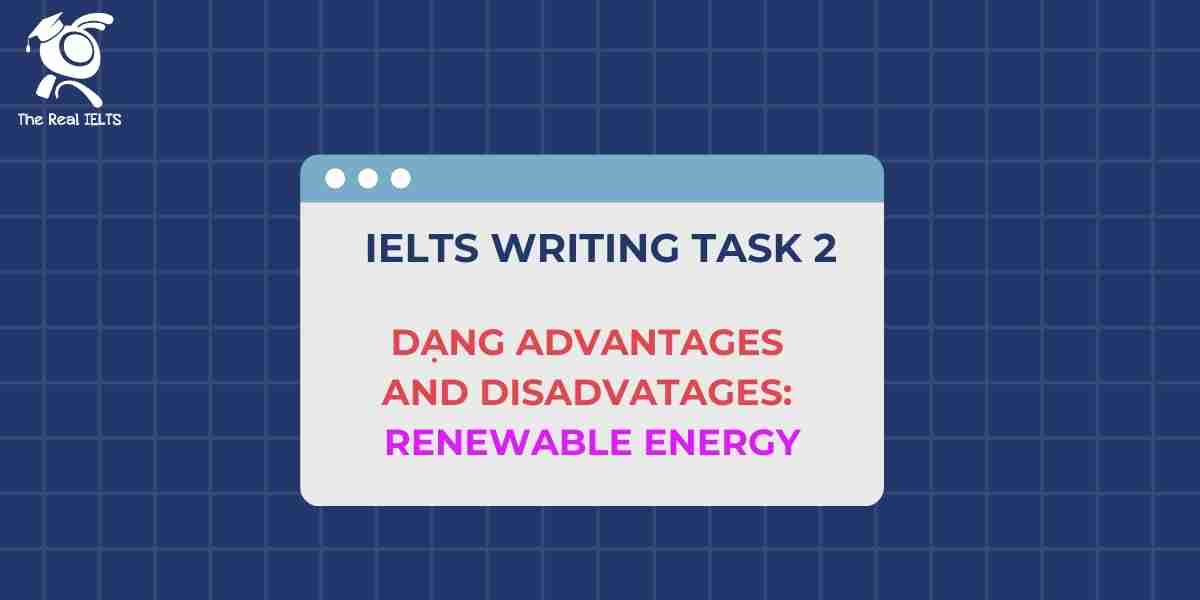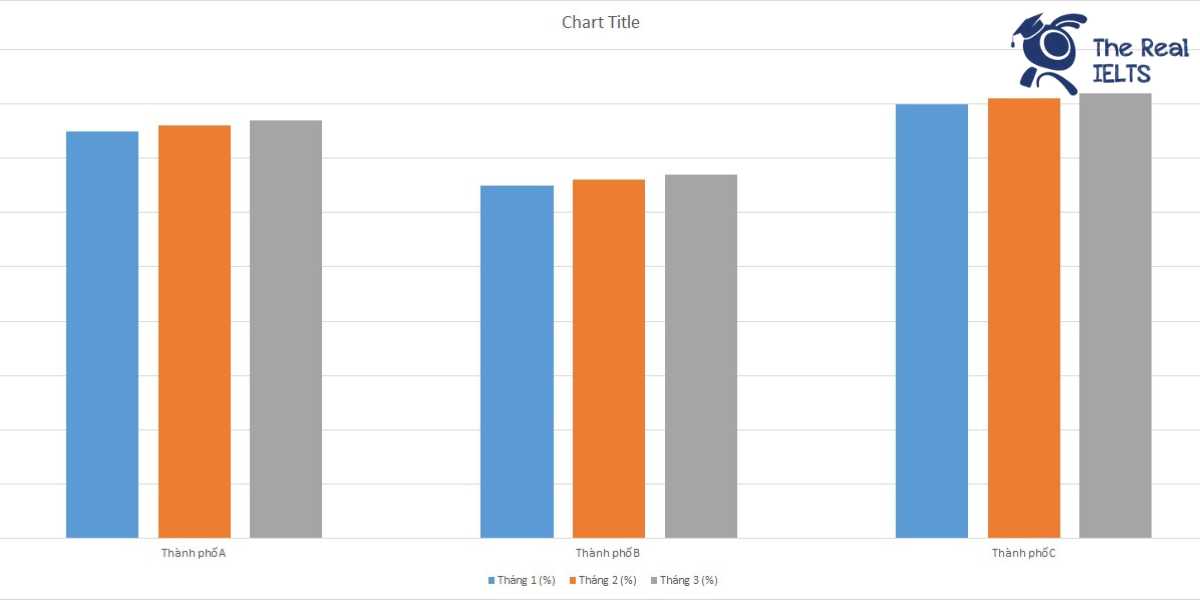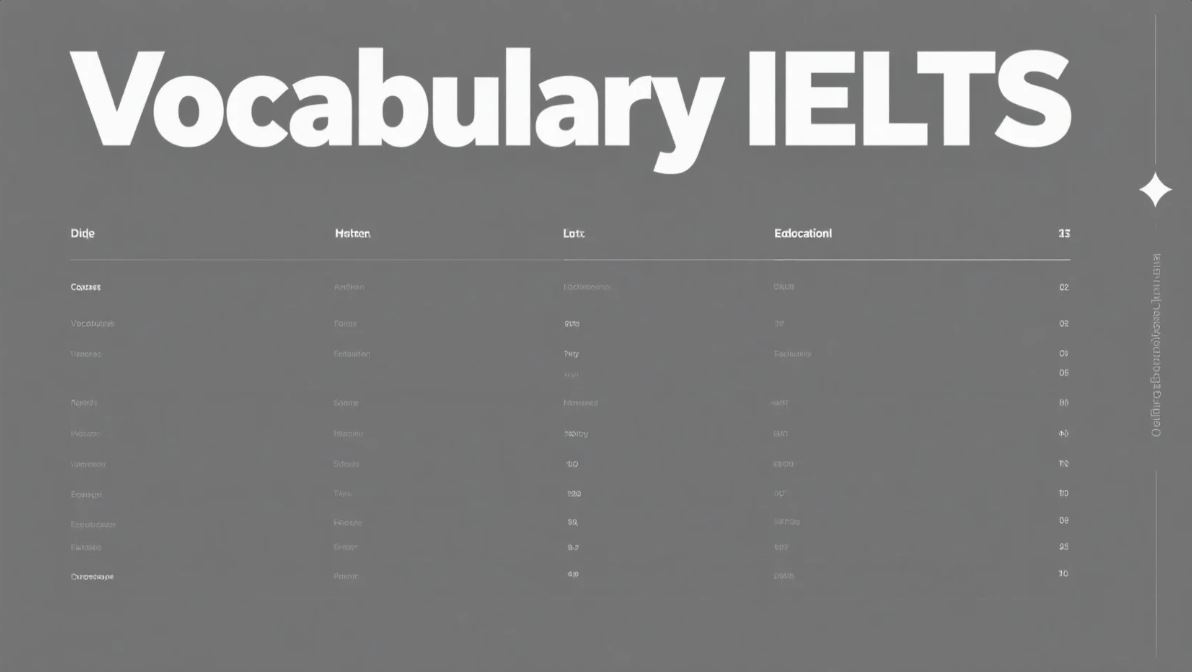Đề bài IELTS Writing task 2 dạng dạng Advantages and Disadvatages: Renewable Energy
You should spend about 40 minutes on this task
The transition to renewable energy sources like solar and wind power. Do the advantages of this outweigh the disadvantages?
Write at least 250 words.
Bài mẫu IELTS Writing Task 2 dạng Advantages and Disadvatages: Renewable Energy
Introduction
The shift towards renewable energy sources, such as solar and wind power, has gained significant attention in recent years due to growing environmental concerns and the need for sustainable energy solutions. This essay will evaluate whether the advantages of transitioning to renewable energy outweigh the disadvantages. It will be argued that while there are notable challenges, the benefits of renewable energy far exceed these drawbacks.
Body Paragraph 1: Advantages
One of the primary advantages of renewable energy is its contribution to reducing greenhouse gas emissions. Unlike fossil fuels, which release large amounts of carbon dioxide and other pollutants when burned, solar and wind power generate electricity with minimal environmental impact. For instance, according to the International Renewable Energy Agency (IRENA), wind turbines produce energy without emitting carbon dioxide, thereby helping mitigate climate change. Additionally, renewable energy sources can help reduce dependence on imported fuels, enhancing energy security and reducing geopolitical tensions. For example, countries like Denmark have successfully invested in wind power, allowing them to decrease their reliance on imported oil and gas.
Another significant benefit is the potential for job creation. The renewable energy sector is labor-intensive and has shown substantial growth in employment opportunities. For example, the U.S. Bureau of Labor Statistics reports that jobs in the solar and wind industries are growing at a rate much faster than the average for other sectors. This growth not only provides direct employment but also stimulates economic development in related industries, such as manufacturing and maintenance services.
Body Paragraph 2: Disadvantages
Despite these benefits, there are several drawbacks to transitioning to renewable energy. One notable disadvantage is the intermittency of solar and wind power. Unlike fossil fuel-based power plants, which can operate continuously, solar and wind energy production is dependent on weather conditions and time of day. This intermittency can lead to inconsistent energy supply and requires investment in energy storage solutions or backup systems. For instance, in regions with less sunlight or frequent cloudy weather, solar panels may produce insufficient power, leading to reliance on backup fossil fuel generators.
Another challenge is the high initial cost of renewable energy infrastructure. The installation of solar panels, wind turbines, and associated technology often requires substantial capital investment. For example, setting up a large-scale solar farm involves significant costs for land, equipment, and installation. While these costs have been decreasing over time, they remain a barrier to widespread adoption, particularly in developing countries with limited financial resources.
Conclusion
In summary, the transition to renewable energy sources like solar and wind power presents both significant advantages and notable disadvantages. While the reduction in greenhouse gas emissions and job creation are compelling benefits, challenges such as energy intermittency and high initial costs must be addressed. Ultimately, the long-term environmental and economic benefits of renewable energy sources outweigh the drawbacks, making a strong case for their continued development and adoption.
Các từ vựng tiếng Anh cần lưu ý trong bài viết
1. Autonomous vehicles (Driverless cars)
- Ý nghĩa: Xe tự hành, xe không người lái.
- Cách sử dụng: Đây là thuật ngữ chính trong chủ đề về công nghệ xe không người lái, đề cập đến các phương tiện có thể tự lái mà không cần sự can thiệp của con người.
2. Traffic accidents
- Ý nghĩa: Tai nạn giao thông.
- Cách sử dụng: Dùng để chỉ các sự cố xảy ra trên đường, thường là kết quả của lỗi người lái, nhưng trong bài này, nó được dùng để làm nổi bật lợi ích của xe tự hành.
3. Human error
- Ý nghĩa: Lỗi do con người.
- Cách sử dụng: Thường được sử dụng để chỉ những sai sót do người điều khiển gây ra, ví dụ như mất tập trung, ngủ gật, hay lái xe trong tình trạng say xỉn.
4. Artificial intelligence (AI)
- Ý nghĩa: Trí tuệ nhân tạo.
- Cách sử dụng: Công nghệ giúp xe tự hành có khả năng xử lý dữ liệu, nhận biết và phản ứng với các điều kiện trên đường. Đây là yếu tố cốt lõi của xe tự lái.
5. Efficiency
- Ý nghĩa: Hiệu quả.
- Cách sử dụng: Trong bài, từ này được dùng để miêu tả sự tối ưu hóa trong giao thông và tiết kiệm thời gian, nhiên liệu khi sử dụng xe tự hành.
6. Optimize traffic flow
- Ý nghĩa: Tối ưu hóa luồng giao thông.
- Cách sử dụng: Đề cập đến khả năng của xe tự lái trong việc điều chỉnh tốc độ và hướng đi để tránh ùn tắc và giữ giao thông thông suốt.
7. Greenhouse gas emissions
- Ý nghĩa: Khí thải nhà kính.
- Cách sử dụng: Từ này xuất hiện trong ngữ cảnh mô tả lợi ích môi trường của xe tự lái, vì chúng có thể giúp giảm lượng khí thải gây ô nhiễm môi trường.
8. Job displacement
- Ý nghĩa: Mất việc làm.
- Cách sử dụng: Dùng để chỉ tình trạng mà người lao động bị mất việc làm do công nghệ thay thế, trong trường hợp này là công nghệ xe tự lái thay thế tài xế.
9. Economic instability
- Ý nghĩa: Sự bất ổn kinh tế.
- Cách sử dụng: Miêu tả tác động tiêu cực của việc mất việc hàng loạt trong một ngành công nghiệp cụ thể, làm ảnh hưởng đến kinh tế của cả cá nhân và cộng đồng.
10. Software glitch
- Ý nghĩa: Lỗi phần mềm.
- Cách sử dụng: Đây là thuật ngữ chỉ các sự cố kỹ thuật hoặc lỗi lập trình trong hệ thống phần mềm, có thể gây ra hậu quả nghiêm trọng khi liên quan đến xe tự hành.
11. Cyberattacks
- Ý nghĩa: Các cuộc tấn công mạng.
- Cách sử dụng: Đề cập đến nguy cơ an ninh khi hacker có thể xâm nhập vào hệ thống điều khiển của xe tự lái và gây ra các sự cố nguy hiểm.
12. Malfunctions
- Ý nghĩa: Sự cố kỹ thuật.
- Cách sử dụng: Thuật ngữ này chỉ sự không hoạt động đúng của hệ thống xe tự hành, có thể dẫn đến những tình huống nguy hiểm trên đường.
13. Safety risks
- Ý nghĩa: Nguy cơ về an toàn.
- Cách sử dụng: Dùng để miêu tả những nguy cơ tiềm ẩn liên quan đến xe tự hành, chẳng hạn như các lỗi công nghệ hoặc khả năng bị tấn công mạng.
14. Disruption
- Ý nghĩa: Sự gián đoạn.
- Cách sử dụng: Từ này dùng để mô tả sự thay đổi lớn trong nền kinh tế hoặc xã hội do xe tự hành gây ra, đặc biệt là đối với lực lượng lao động trong ngành vận tải.
Thống kê cấu trúc câu và cấu trúc ngữ pháp
Cấu trúc câu:
- Câu đơn (Simple sentence):
- Ví dụ: “Autonomous vehicles can communicate with each other to optimize traffic flow.”
- Chỉ có một mệnh đề chính, không chứa mệnh đề phụ.
- Số lượng: 4 câu
- Ví dụ: “Autonomous vehicles can communicate with each other to optimize traffic flow.”
- Câu ghép (Compound sentence):
- Ví dụ: “This can save both time and fuel, benefiting individuals and the environment.”
- Có ít nhất hai mệnh đề độc lập được nối bằng liên từ (như and, but, or).
- Số lượng: 6 câu
- Ví dụ: “This can save both time and fuel, benefiting individuals and the environment.”
- Câu phức (Complex sentence):
- Ví dụ: “While autonomous vehicles offer numerous advantages, concerns about their drawbacks persist.”
- Bao gồm một mệnh đề chính và một hoặc nhiều mệnh đề phụ.
- Số lượng: 9 câu
- Ví dụ: “While autonomous vehicles offer numerous advantages, concerns about their drawbacks persist.”
- Câu phức ghép (Compound-complex sentence):
- Ví dụ: “Despite these advantages, driverless cars also present certain challenges, and one major concern is the potential loss of jobs in sectors like transportation.”
- Kết hợp cả cấu trúc câu phức và câu ghép, bao gồm ít nhất hai mệnh đề độc lập và một mệnh đề phụ.
- Số lượng: 3 câu
- Ví dụ: “Despite these advantages, driverless cars also present certain challenges, and one major concern is the potential loss of jobs in sectors like transportation.”
Cấu trúc ngữ pháp:
- Thì hiện tại đơn (Present simple):
- Ví dụ: “Autonomous vehicles reduce traffic accidents.”
- Dùng để mô tả sự thật chung hoặc thói quen.
- Số lượng: Chiếm đa số trong bài, đặc biệt trong các câu trình bày lợi ích và bất lợi.
- Ví dụ: “Autonomous vehicles reduce traffic accidents.”
- Thì hiện tại hoàn thành (Present perfect):
- Ví dụ: “Tesla’s Autopilot system has already demonstrated the ability to prevent accidents.”
- Dùng để diễn tả một hành động đã xảy ra và có ảnh hưởng đến hiện tại.
- Số lượng: 2 câu
- Ví dụ: “Tesla’s Autopilot system has already demonstrated the ability to prevent accidents.”
- Cấu trúc câu bị động (Passive voice):
- Ví dụ: “Many truck drivers may find themselves out of work.”
- Dùng để nhấn mạnh kết quả của hành động hơn là người thực hiện.
- Số lượng: 2 câu
- Ví dụ: “Many truck drivers may find themselves out of work.”
- Cấu trúc câu điều kiện (Conditional sentence):
- Ví dụ: “If the technology is developed responsibly, it will reduce accidents.”
- Dùng để diễn tả giả định về tương lai.
- Số lượng: 1 câu
- Ví dụ: “If the technology is developed responsibly, it will reduce accidents.”
- Liên từ và từ nối (Conjunctions and linking words):
- Ví dụ: While, Despite, However, For instance, Another key advantage, In conclusion.
- Dùng để nối ý và tạo tính liên kết giữa các đoạn văn, giữa các ý trong một câu.
- Số lượng: Phân bố đều trong bài, sử dụng hợp lý để chuyển ý.
- Ví dụ: While, Despite, However, For instance, Another key advantage, In conclusion.
- Mệnh đề phụ thuộc (Dependent clause):
- Ví dụ: “As autonomous vehicles take over driving tasks, many drivers may lose their jobs.”
- Dùng để bổ sung thông tin cho mệnh đề chính.
- Số lượng: 5 mệnh đề
- Ví dụ: “As autonomous vehicles take over driving tasks, many drivers may lose their jobs.”
Đọc thêm về bài viết gợi ý luyện thi IELTS.















